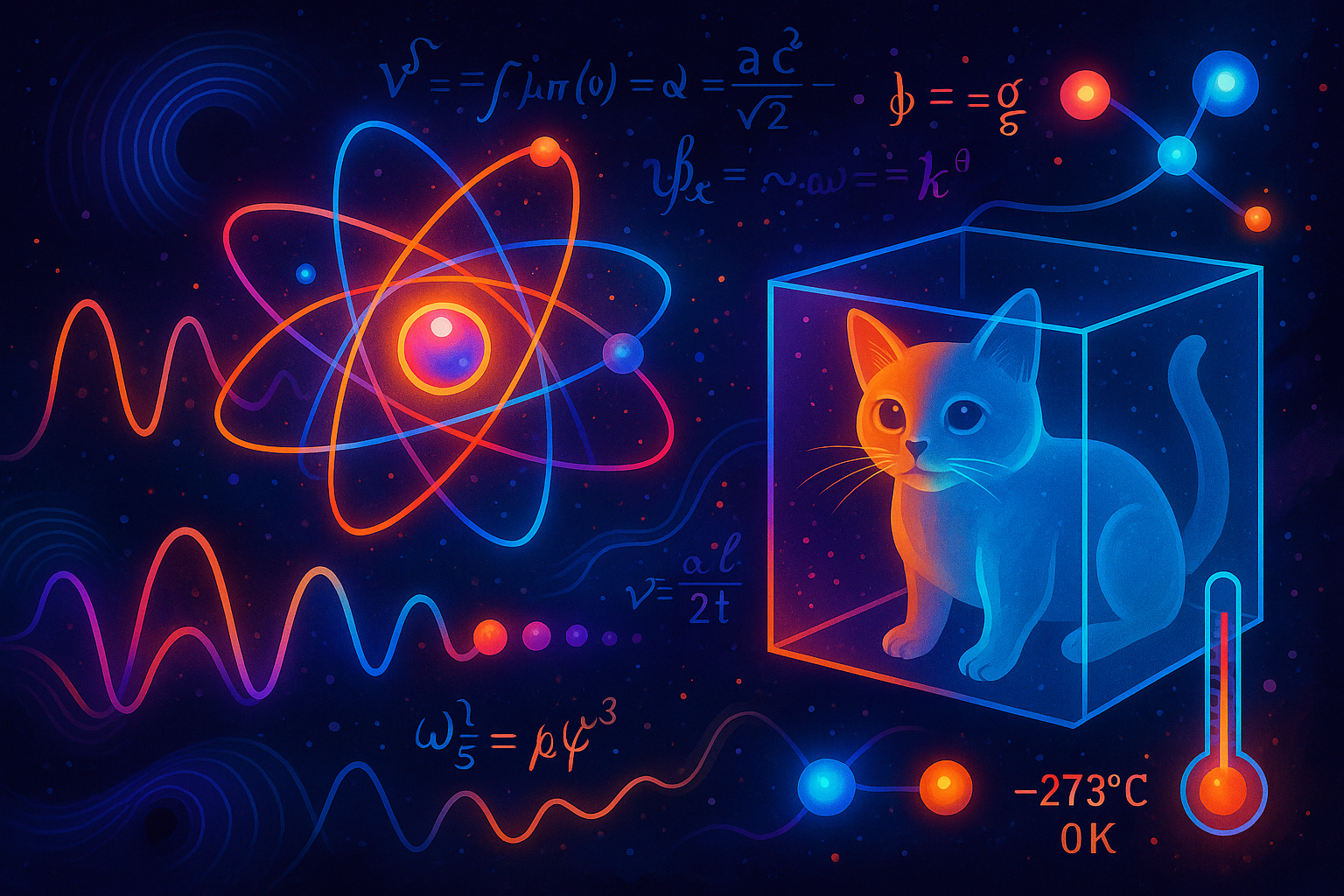Two things never fail to fascinate me: the vastness of infinite space and the bizarre behavior of the tiniest particles known to science. In this note, I’ll focus on the latter — a phenomenon so mind-bending that it feels like it belongs in science fiction: superposition.
Particles in Superposition: Being in Many States at Once
At the quantum level — the scale of atoms and subatomic particles — things don’t work the way we’re used to. Amazingly, particles can exist in a state called superposition, where they are in multiple states at the same time. Sounds crazy? It is.
Take light, for example. Sometimes it behaves like a particle, sometimes like a wave, and sometimes… both. Even more baffling, a single particle can exist in multiple locations at once — though we’ll get into what “location” really means in quantum physics in a bit.
Let’s start with the legendary experiment that first revealed this strange behavior.
The Double Slit Experiment
The double slit experiment, first conducted by Thomas Young in 1801, is a cornerstone of quantum mechanics. It goes like this:
- Particles through a single slit: When particles (like electrons or photons) are fired through a single slit onto a screen, they make a single band — just what we expect from something behaving like a particle.
- Particles through a double slit: When fired through two slits, they create an interference pattern — a series of bright and dark bands. This is what we expect from waves, not particles. The pattern suggests that each particle is somehow going through both slits at once, interfering with itself.
- Now add observation: Here’s where it gets weird. If we put a detector to check which slit the particle actually goes through — even if no human is watching the data — the interference pattern disappears, and we’re back to two particle-like bands.
This tells us something profound: the mere act of observing changes the behavior of the particle. Unobserved, it exists in a superposition of possibilities. Observed, it chooses one.
What Does “Superposition” Really Mean?
Back to our discussion: superposition means a quantum particle isn’t this or that — it’s both, until it’s measured. But this fragile state doesn’t last long. For most particles, superposition can only occur in very specific conditions, like:
- Extremely low temperatures (near absolute zero, or 0 Kelvin / -273°C — the coldest possible temperature in theory).
- Isolated environments where almost no external energy can interfere.
Even with all this, the superposition state typically lasts less than a second.
Now, let’s revisit that idea of a particle being in multiple locations at once. In classical physics, “location” means a fixed point in space. But in quantum physics, location is described by a probability wave — a cloud of possibilities where the particle might be, until it is measured. So when we say a particle is in multiple locations, we mean its position is spread out across space, with varying probabilities.
And here’s the exciting part: In 2025, scientists discovered a particular atom that can maintain a stable superposition for over 20 minutes — an incredible breakthrough. This could open the door to entirely new forms of technology built on quantum principles.
Schrödinger’s Cat: The Most Famous Thought Experiment
Because superposition is limited to tiny particles, it raises an interesting question: what happens if we link a quantum particle to something macroscopic, like… a cat?
It is Erwin Schrödinger, who in 1935 proposed a famous thought experiment:
- Put a cat in a sealed box.
- Inside the box is a radioactive atom in a superposition (decayed and not decayed).
- If the atom decays, it triggers a poison that kills the cat. If not, the cat lives.
Until we open the box, the atom is in a superposition — and so is the cat. It’s both alive and dead, at the same time. Of course, no real cats were harmed — this is just a way to show how weird quantum rules could apply to the everyday world if entanglement connects the quantum and classical realms.
What’s Next for Quantum Physics?
Quantum physics is no longer just theory. It’s already fueling advances in computing, cryptography, and sensing technologies. And who knows? As we learn to better control superposition and entanglement, we might one day unlock concepts like teleportation or even time travel — ideas that once lived purely in science fiction.
Let’s keep pushing the boundaries.
Photo credit: ChatGPT
Views: 13

Leave a Reply